design 5.8 ghz video transmitter
Video transmitter or VTX in short is the component on the drone that transmits the video from our FPV cameras wirelessly to our FPV goggles. The sole purpose of the VTX is to transmit video and is independent on the camera or the camera settings. VTX is probably one of the simplest components to buy meaning to say all VTX are capable of getting the job done aka transmitting video.
More...
Even though technology has advanced FPV transmitters are still analog TRANSMITTING AT 640x480 RESOLUTION. Analog FPV VTX's are the limiting factor in determining the video quality, not the camera.
Digital video transmitters like the Connex Prosight HD or Insight SE are an exception transmitting videos at 720p or 1080p. This capability comes at a price- digital transmitters make use of standalone HD cameras to capture video at high resolution making it relatively more expensive than analog transmitters and are usually large and bulky.
Also digital cameras cannot transmit over large distances with most commercial transmitters only good for indoors or distances below 1km.
Below listed are a few factors to consider that may possibly help simplify the buying process.
Factors to consider
Buying a quality VTX and a terrible VTX can be the difference between a great image quality and disappointing video feed. As mentioned earlier, selecting and buying a VTX can be one of the easiest things to do and saying that below listed are a few significant aspects to consider that might help in buying a VTX that suits for your specific needs.
Frequency
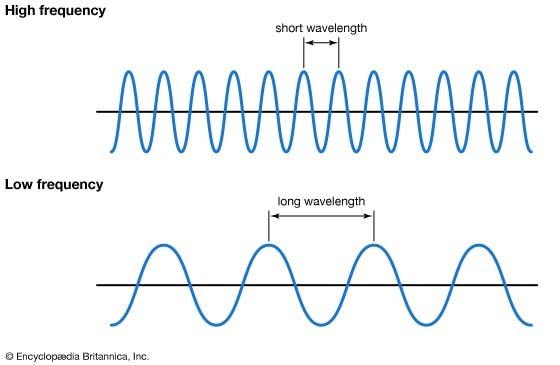
One of the first things to decide before even starting to look for VTX's is what frequency you intend to use? VTX's can transmit video in a wide range of frequencies- 1.2GHz, 2.4GHz and 5.8GHz. These lower and higher frequencies have their sets of pros and cons.
Lower frequencies travel longer distances and have greater penetration power through objects. But as you move higher up in the frequency spectrum, penetration through objects drastically reduces. Another major difference is Lower frequencies require larger antennas as compared to higher frequencies.
From FPV point of view, 5.8GHz is most widely used because of its compact antennas and exceptional image quality and object penetration. As most FPV pilots do not fly more than 2-3Km away from them, the range from 5.8GHz is sufficient enough.
But long range FPV requires lower frequency Video transmission equipment for better penetration through objects such as trees.
More information on long range FPV setup.
Power Output
Power output is the amount of radio frequency energy that is radiated at its output into the surroundings. FPV transmitters come with power outputs of 25mW, 200mW, 400mW, 600mW and so on. Higher the power output, more the heat is generated in the VTX and more the active cooling the VTX needs to stay cool.
But do we really require higher power outputs? Not really, a 25mW transmitter can sufficiently transmit videos for up to a mile, but that's considering there are no obstacles in between the VTX and VRX (video receiver).
A 200mW would suffice for most cases for flying around a park or anywhere you fly. But if you intend to fly long range quads, then using a VTX with 1.2-1.3GHz with a 600mW or higher makes sense.
But higher power outputs do not equate to increased range, range and video quality depend on various other factors such as diversity video receiver setup, Antennas used, Antenna sensitivity, flying environment etc.., more on the factors influencing range is discussed below.

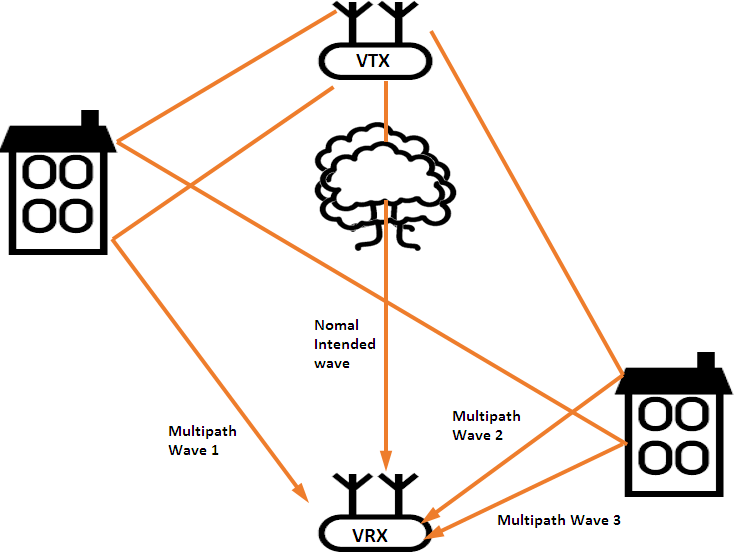
In fact, the higher power may do more harm than good in closed spaces. The high energy radio waves may bounce off the walls causing interference in a phenomenon known as Multipath propagation or Multipathing (The radio signals reach the receiver by 2 or more paths by bouncing off objects), making it difficult for the VTX to detect.
More on Multipathing here
Hence it is not advisable to use higher power output VTX's unless absolutely necessary. Another thing to keep in mind is, there a lot of variable output power transmitters that change the power output at the flip of a switch or the flick of a button which can be configured in Betaflight.
Channel Support
Channels are the individual frequency in which a VTX can transmit video. Channel support is the total number of channels in which the transmitter can transmit the video. Each channel is separated by a constant frequency gap in that particular band. The separation may be 19MHz, 20MHz, 25MHz or 37MHz.
| Freq Band | CH1 | CH2 | CH3 | CH4 | CH5 | CH6 | CH7 | CH8 | Bandwidth |
|---|---|---|---|---|---|---|---|---|---|
| A | 5865 | 5845 | 5825 | 5805 | 8785 | 8765 | 8745 | 8725 | 25 |
| B | 5733 | 5752 | 5771 | 5790 | 5809 | 5828 | 5847 | 5866 | 19 |
| C | 5658 | 5695 | 5732 | 5769 | 5806 | 5843 | 5880 | 5917 | 37 |
| D | 5362 | 5399 | 5436 | 5473 | 5510 | 5547 | 5584 | 5621 | 37 |
| E | 5705 | 5685 | 5665 | 5645 | 5885 | 5905 | 5925 | 5945 | 20 |
| F | 5740 | 5760 | 5780 | 5800 | 5820 | 5840 | 5860 | 5880 | 20 |
Were you wondering why race organizers use Race band every time you go to a race? That's because the bandwidth or the separation between the channels of band "C" or otherwise known as race band is the highest, higher the separation between the channels, lower the chance of interference.
If you are flying alone, bandwidth does not matter because you only have one transmitter flying in the air. But if you are flying with some of your buddies, bandwidth becomes. If you intend to go to racing events and are planning to race, look for VTX's that support race band.
Ease of Switching between channels
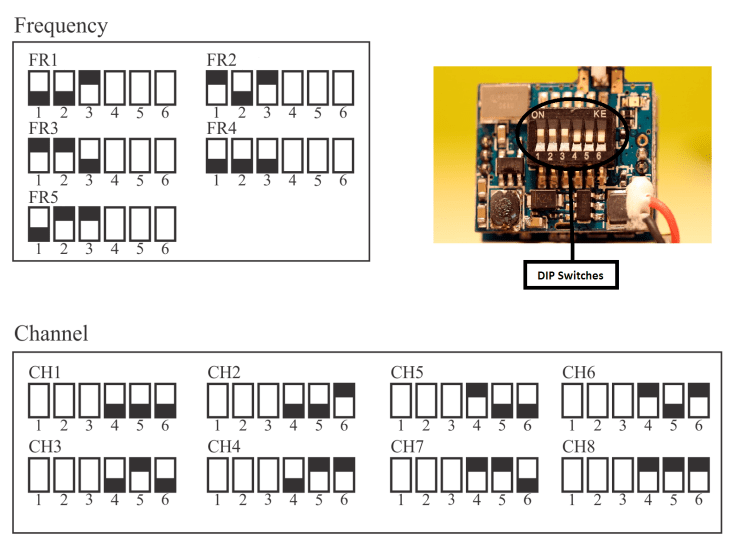
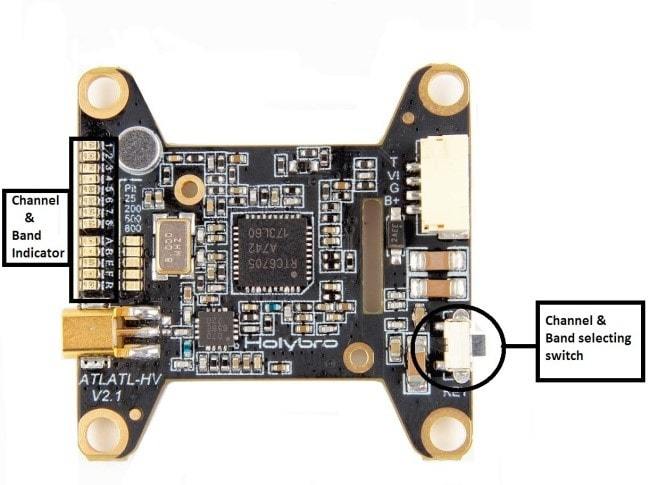
There are 3 ways to switch between channels of a VTX. 2 of the ancient methods are making use of DIP switches and dedicated push buttons. Dip switches are really small and hard to flick and access, but once fixed at a certain channel it's hard to accidentally change channels. Push Buttons on the other hand are convenient to use and easy to access but the chances of accidentally changing the channels are more.
When at an event, if the race organizers ask you to change the channels on your VTX it is literally impossible to change channels on a VTX with dip switches. Buttons can also be a pain if you are moving from Band A to Band F, PS: imagine scrolling through 40 channels manually.
The other most convenient method of changing VTX channels is through Betaflight OSD. If a VTX is equipped with something known as smart audio, then the settings and the channels on the VTX can be changed through Betaflight OSD. Smart audio is discussed in detail below.
Smart Audio
Smart Audio is a rather new feature introduced a couple years back with limited VTX's supporting, AKK VTX or Holybro Atlatl VTX to name a few. The limited Smart audio support on VTX's is due to its and it being implemented on premium VTX's. Smart audio is a feature that allows users to change VTX channels and power outputs. Smart audio works by utilizing any unsued UART on the FC. Further reading on Flight Controllers and UART's .
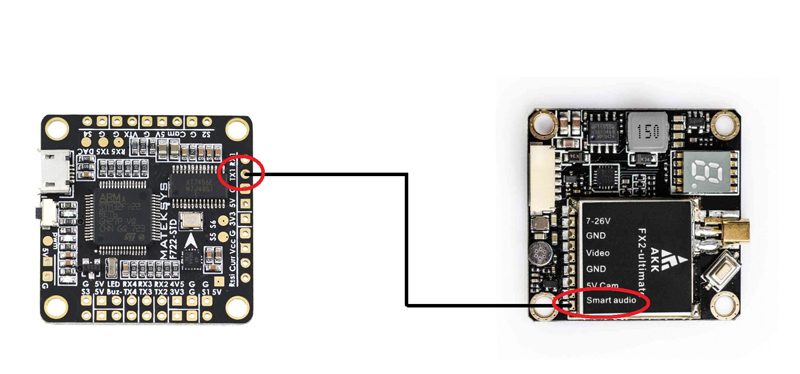
There are 2 different protocols in use- Tramp Telemetry from ImmmersionRC and Smart audio from TBS. Though their inner workings differ, they both serve the same purpose under two different names. VTX's support either of the two protocols, depending on the protocol your VTX supports and select accordingly in Betaflight.
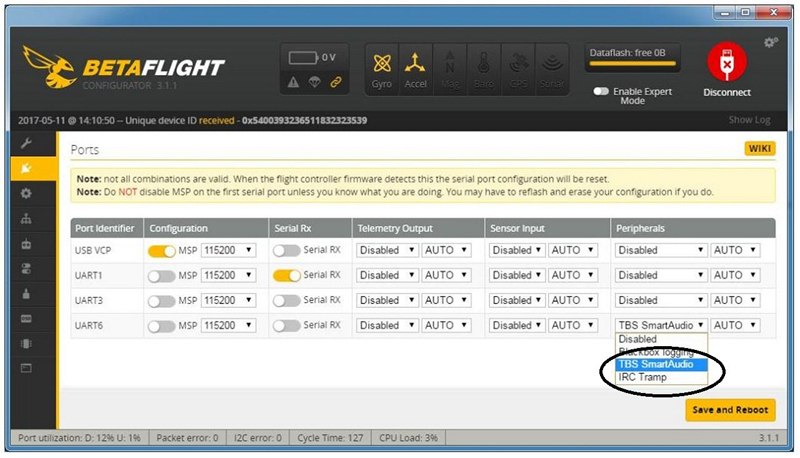
Other Factors to Consider
Antenna Connectors

There are 3 major connectors used in FPV VTX's. They are UFL, SMA and MMCX. MMCX is the new kid in the block. UFL connectors are used for micro sized FC's that does not require robustness. SMA connectors are sturdy, but they put too much stress on the VTX connector. MMCX on the other hand has a circular connection that swivels to prevent any stress on the VTX.
SMA connectors come in 4 configurations- SMA male (also known as SMA plug) and SMA female (also known as SMA jack), RP-SMA male and RP-SMA female. The connector used varies from VTX to VTX. Hence it is quite important to pay attention to the connector type.

Some VTX's come with extension cables, this is a useful feature as it helps the VTX connector to be sturdily placed on the frame (yes some frames come with VTX mounting holes).
It helps one place the VTX conveniently in space constrained builds and also reduces the stress placed on the VTX itself. So if the VTX you intend to buy comes with extension cables, it's worth taking a look at it.
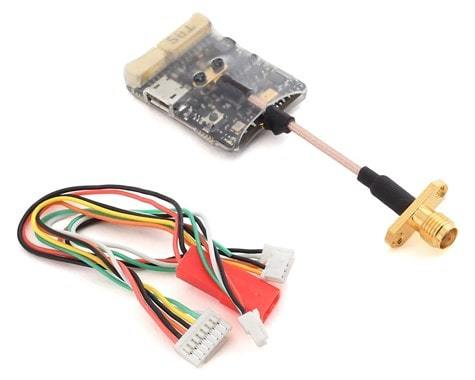
Form Factor
VTX's come in a wide variety of sizes, all the way from the smallest being the size of a coin to 36x36mm sized feature rich VTX's. The smaller VTX's perform just as fine, but at a price, smaller VTX's don't come with higher power outputs. The smaller VTX's also lack smart audio.
The reason why the smaller VTX's lack higher power outputs is due the heat produced when outputting the video. Larger VTX's have larger heatsinks and bigger heatsinks and have smart audio as an added bonus. Smaller VTX's are most definitely used on smaller builds and usually do not require higher power outputs due to the close proximity flying.
Hence it is recommended to buy a fairly larger than a nano VTX for larger than 3" micro builds due to the better heat dissipation the VTX offers and the functionality it offers.
Internal Microphone
Most people don't care about a microphone being present on VTX's. Microphones record audio which get transmitted through the VTX. But microphones are totally a personal preference thing. Some people do not like the buzzing sound of the air flowing over the quad, some people like it.
Some people roll down the windows of their cars driving through the countryside, but some people like to feel the wind flowing over the face. Microphones help give a more immersive experience.
Again, it's a wholly personal thing and you can always switch off the microphone on the VTX if you don't like it, but who knows you may even like it. Wouldn't hurt to give it a try right??
Pit Mode
Pit mode is another new feature being introduced by VTX manufacturers that transmits video at a few mW (milli watts) power. This feature is particularly useful to change or tweak the VTX settings or deal with some other things with the VTX powered on.
As the quad is stationary on the ground and with no air flow across the VTX, the VTX tends to become very hot on ground conditions. Higher the power output and the longer the VTX is stationary, the greater risk of damage to it.
Hence to minimize the risk of burning the VTX, manufacturers introduced the pit mode. You can get away just fine with a VTX not equipped with pit mode as the low power outputs on most of VTX's produce minimal heat.
Voltage Support
Voltage support is the operating voltage the VTX supports. Some VTX's support a large range of voltage inputs ranging from 2-6s. This 2-6s voltage is a large input and you can power your VTX by directly soldering on battery pads.
Atleast that's what the manufacturers want us to do!! It is strictly not advised to power your VTX directly through the battery. Our LiPo batteries cannot handle the high current draws of most modern motors and cause voltage spikes. These voltage spike causes momentary voltage drops across the VTX.
And voltage drop across the VTX means one thing, the VTX temporarily loses power and cannot transmit the video. No video means you have a temporary video loss and you lose your eyes in the sky.
You can combat this problem by using LC power filters, that filter out these voltage spikes. Another way is by powering your VTX's through dedicated ports on FC's and PDB's. Almost all modern FC's have dedicated filtered power supply ports for VTX's and PDB's have them too. So it is not advised to power the VTX directly form the battery unless absolutely necessary.
Factors affecting Range
Range is the maximum distance travelled by the quad before the video feed transmitted by the VTX is lost. After a certain point the video becomes so weak, it literally becomes unflyable. Range can be affected not only by the output power of the VTX but also external factors such as antenna used on both the transmitting and the receiving end, receiver sensitivity and flying environment.
Antenna used
Antennas used in a quad plays a major role in the quality of the video being transmitted and received likewise. There are 2 types of antennas used in FPV mostly, Omni directional (circularly polarized) and Bi directional (linearly polarized) antennas. They both differ in how they transmit the video.
Sometimes bad video feed might be due to using incompatible antennas. Again the Omnidirectional antennas come in 2 types- LHCP (left hand circularly polarized antenna) and RHCP (right hand circularly polarized antenna). Left hand and right hand polarization refers to the orientation in which the wave is rotated.

Linear antennas transmit the waves in a single plane ie.., either the horizontal or the vertical axis. They have a concentrated emission and hence have a longer range. But there's catch to this increased range, the antenna from the quad and the receiver must more or less be oriented to each other.
If the orientation is lost, the image/video feed is lost. They are suitable for long range setups as the orientation of the quad with respect to the receiving antennas does not change significantly.
Circularly polarized antennas transmit waves in 2 planes ie.., both the horizontal and the vertical simultaneously. This results in a slight loss of the transmission power and hence a reduced range.
We don't have to worry about the orientation as the receiver keeps receiving the video no matter the orientation of the quad. If you plan to race, the quad tends to keep changing its orientation rather often. Hence:
Omnidirectional antennas = Exceptional image quality at close proximity flying
Bidirectional antennas = Long range flying

Receiver Setup
Receiver setup refers to the type of VRX used. VRX's come with single receiver and dual receiver, dual antenna setup. Dual antenna VRX's are commonly known as diversity receivers. A single receiving module consists of 2 independent receiving units that receive video signals and based on the signal strength, the video from the receiver with the strongest signal get displayed on the goggle's screen.
Diversity receivers are always preferred because of their far superior performance than the single receiver units. Also on a diversity receiver, both a bidirectional and an omnidirectional antenna can be used. By doing this we get the best of both antennas by not compromising on performance.
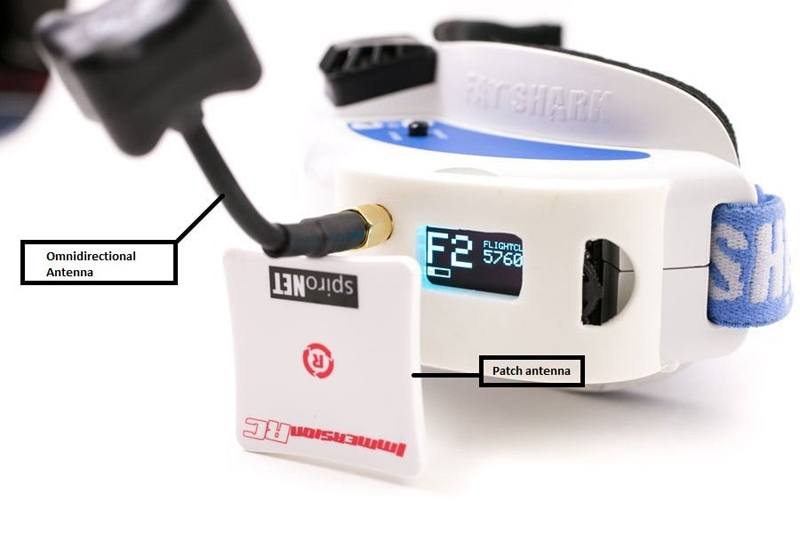
Flying environment
Flying environment is your typical flying area. Flying places vary from place to place. Flying environment refers to the interference from other electronic gadgets running 5.8GHz.
Interference can also be caused by obstacles such as trees, buildings etc.., Interference is not good for video transmission as any and every solid object blocks the waves from reaching the receiving end. Yes, I know it is sometimes really difficult to avoid solid objects.
To have the best FPV experience try to avoid flying behind objects. But if you really want to, then try using a diversity receiver for better reception.
Lesser the obstacles between you and the quad in the air, clearer is the video feed. So it is good practice to fly in large open spaces rather than space constrained areas. Another advantage of flying outside the city is, it reduces the interference from electrical gadgets such as home WiFi (you guessed it, WiFi works in the 5.9GHz frequency)
Conclusion
The cheapest VTX found on Banggood for $15 work just fine, here longevity and reliability becomes a concern. Good quality VTX's can be found for $30. This article tried to give a rough idea and a basic outline and above mentioned factors are a mere measure to determine a VTX's quality, usability, features and value for money.
There are some fantastic articles found online read for further reading. We hope you enjoyed reading this article, as much as much as we enjoyed writing it. Share this article and the spread word about Dronenodes.
Happy flying!!!
design 5.8 ghz video transmitter
Source: https://dronenodes.com/best-vtx-fpv-video-transmitter/
Posted by: christensenwele1946.blogspot.com

0 Response to "design 5.8 ghz video transmitter"
Post a Comment